Damascus steel is one of the great mysteries in the world of knives and swords. It was an extremely popular material in the past, but the exact manufacturing technique was lost for quite some time. Both scientists and knife enthusiasts have made attempts to recreate this fascinating metal with mixed success.
Damascus steel originally contained wootz steel, which itself was formed by mixing iron ore with charcoal or plant matter. This created high-carbon wootz ingots that could then be forged into blades. Forging happened at relatively low temperatures. This, combined with hammering and acid etching, gave Damascus blades their striking appearance.
The finish was not the only thing that made Damascus blades sought-after. At the time of its invention, it was one of the strongest alloys in the world. In hindsight, it is incredible that sword makers could produce such beautiful blades that were both hard and flexible.
Damascus blades produced today can be made with pattern welding and crucible methods. We will discuss the history of this intriguing metal, plus how scientists were able to reverse-engineer the structure of ancient Damascus steel. We will also see how modern Damascus blades compare to ancient versions.
Table of contents
What was original Damascus steel?
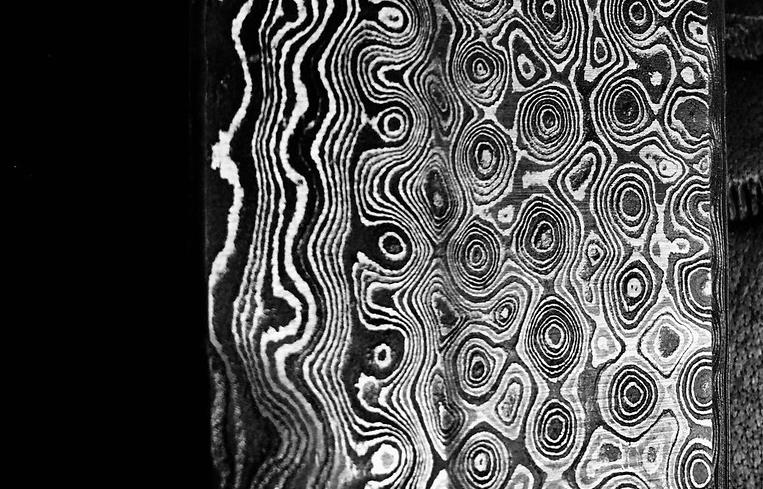
Origin
The most obvious answer for where the steel got its name would be the Syrian city of Damascus. It is unclear whether the name refers to tools made in Damascus or tools traded and sold in Damascus. Another possible explanation is that it derives from the word “Damas” which means “watered” in Arabic. This makes some sense as the surface of Damascus steel has a wavy appearance.
No matter what the exact answer is, Islamic sword makers certainly did craft magnificent blades from Damascus steel in the Middle East hundreds of years ago. Thanks to their masterful forging, some have lasted until the present day.
Composition
The famous weapons manufactured with the original Damascus steel were themselves derived from another type of steel called wootz. This type of steel comes from India and was first traded in Damascus between the 3rd and 4th centuries.
The specific method to produce wootz steel was lost during the 18th century when gun production increased and the demand for Damascus swords declined. Other possible explanations are that trade routes were lost and that Indian mines containing iron ore were used up.
This is a crucial loss because wootz is the raw material and without it, there can be no Damascus steel. Early attempts to reproduce wootz involved adding various metals to ordinary steel but were unsuccessful.
It was discovered later that wootz was most likely made by mixing iron with charcoal at very high temperatures and then slowly cooling it. This explains the high carbon content of Damascus steel in comparison to standard types. Modern-day analysis of original Damascus steel revealed that carbon nanotubes exist in the metal structure too.
Manufacture
Not wanting to share their secrets with the rest of the world, Arab swordsmiths never revealed specific details about how they turned raw wootz into spectacular Damascus steel weapons.
We know that Damascus steel can be very sharp and hard, but the exact manufacturing temperature and quenching method are not clear. Some sources indicate that the blades were forged at relatively low temperatures and then quenched in donkey urine.
The beautiful finish on the surface of the steel was achieved by etching the blade with acid, though the overall pattern was a result of the etching, hammering, and cooling processes.
What is modern Damascus steel?
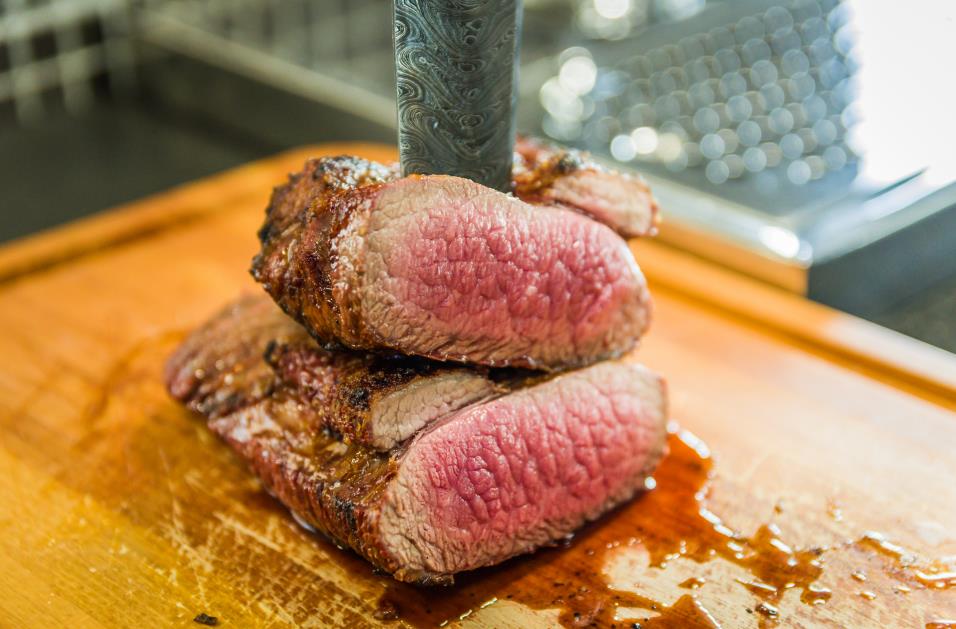
How was it reinvented?
The only way to approximate the original method of Damascus steel manufacture was to reverse-engineer it. That is, by analyzing existing samples of original Damascus steel and trying to recreate the forging process.
One man who was eager to manufacture Damascus steel again was the Russian Pavel Anosov. During the 19th century, Anosov conducted experiments to try and recreate the steel he knew as “bulat”. He did not succeed.
Jeffrey Wadsworth and Oleg Sherby uncovered the secrets of Damascus steel in the 1980s. As researchers at Stanford University, they discovered that Damascus steel needs a high carbon content of between 1 and 2% which is more than in conventional steel.
They also understood that it must be forged at a fairly low temperature, shaped, reheated, and then swiftly quenched. Following these steps makes the steel very hard, possibly more so than the original Damasus steel.
Wardsworth and Sherby were not the only people fascinated by this ancient material. The swordsmith William Moran invented his own version of modern Damascus steel that consists of layers of different steel and iron joined together. This block of metal is then hammered, stretched, and folded numerous times to generate hundreds of layers ― like a samurai sword.
Handpicked high carbon steel knives
True cutting power in the palm of your hand
What is used instead of wootz?
To recreate Damascus steel, high carbon steel alloys can be used as the raw material. The hardness of these alloys most effectively recreates the mechanical properties of original Damascus blades.
The high-carbon alloys used in modern Damascus steel are often mixed with other metals such as nickel or vanadium. This combination is what makes it both hard and corrosion-resistant without being brittle.
Alternatively, stainless steel layers can be forged using the same process as high carbon steel to produce a modern alternative to Damascus steel. A blade made like this may not be as hard as carbon steel versions but is less brittle and has a shinier appearance.
Damascus steel variants
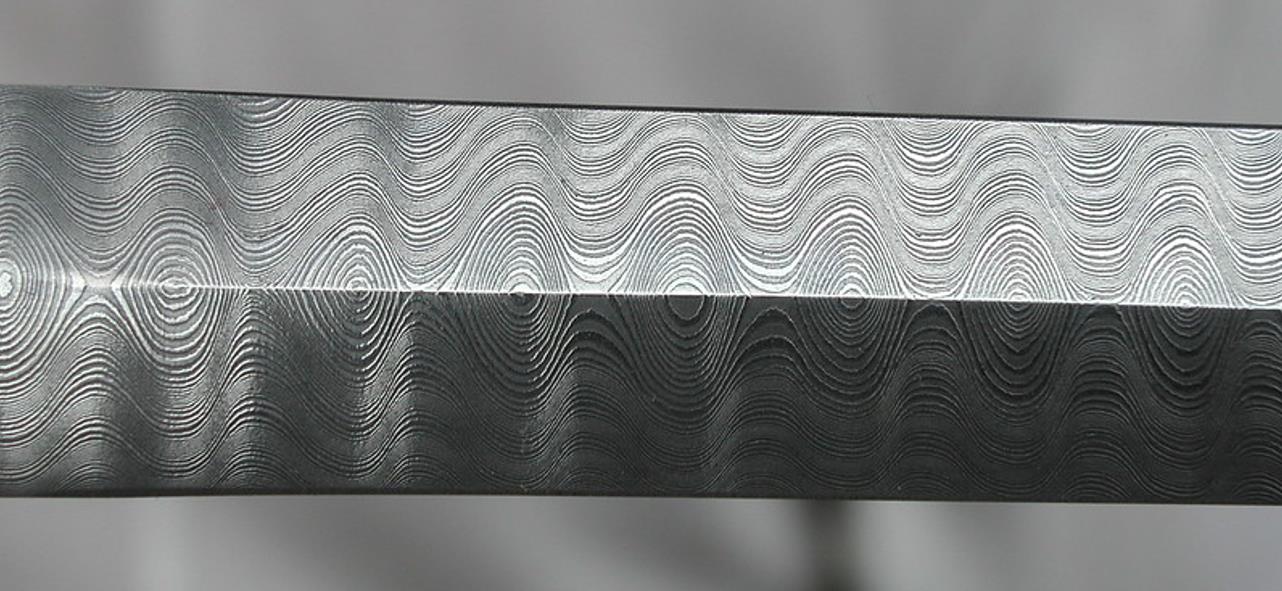
Pattern welded steel
To manufacture pattern-welded Damascus steel, multiple layers of iron and steel are stacked and then joined together at a high temperature. For the layers to bond properly, this must be done in an oxygen-free environment.
After the initial forging, the knife billet has to be stretched (while at a high temperature) through hammering. It must then be folded and stretched repeatedly until the blade has hundreds of layers. This method makes the blade very strong, though it is not how Damascus knives were originally made.
William Moran pioneered the process of pattern welding to produce Damascus steel in the 1970s.
Crucible
This manufacturing technique more closely mimics that of original Damascus steel by attempting to recreate wootz steel as the raw material. John Verhoeven and Alfred Pendray are two scientists who documented their attempts in the 1990s.
To make wootz steel, iron ore is mixed with leaves and wood and then melted. The iron absorbs the carbon from the plant material to become the high-carbon wootz steel (or a close equivalent).
Verhoven and Pendray hoped to mimic the iron carbide grains in the original Damascus steel by forging the wootz at a low temperature. In order not to destroy the wavy pattern on the surface, it was necessary to carefully alternate the temperature while working the metal.
Stainless steel
Using stainless steel to create a Damascus blade goes against the standard production method for this metal. Originally, Damascus steel only contained high-carbon steel. Using stainless steel instead of high-carbon steel will still generate a very beautiful knife, but with different mechanical properties
Using the pattern welding process described above, layers of stainless steel can be hammered and welded into a single billet. A stainless Damascus steel blade will contain two or more types of stainless steel. This can then be stretched and folded multiple times to increase its strength. Heat treatment can improve the blade’s hardness.
Damascus steel: ancient vs modern
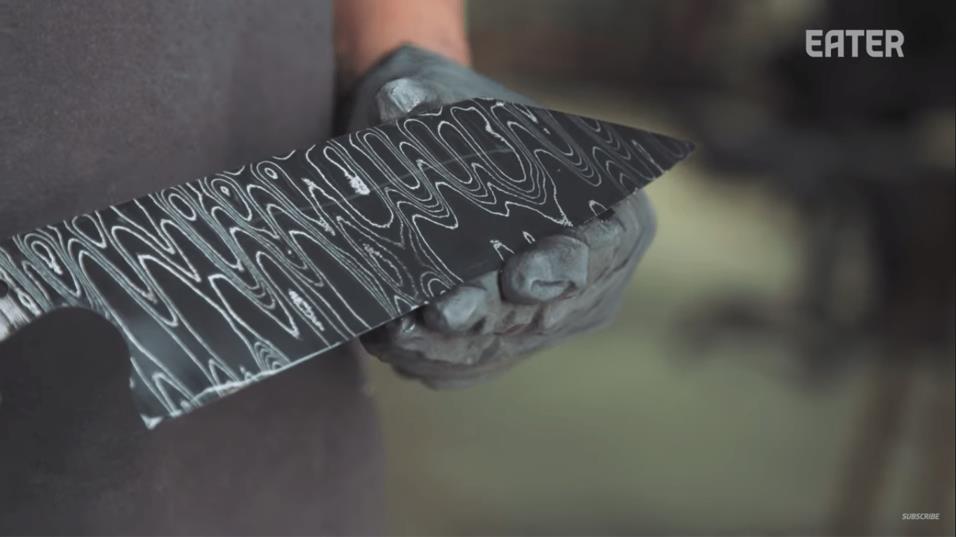
It’s worth noticing that ancient Damascus steel and modern pattern-welded Damascus steel are two completely different materials. Despiting sharing one name.
Pattern welding is the main technique for manufacturing Damascus steel today ― the crucible method is not used for any knives on sale. As we mentioned, that involves joining layers of steel in a low oxygen environment, then hammering and folding it many times. This produces a strong blade. Unfortunately, cheap imitation Damascus steel knives exist too. These are low-quality knives that are etched in the Damascus style. This pattern can wear off with time.
Thanks to its beauty, Damascus steel is as popular as ever and is available, not just in knives, but also in jewelry. Even with modern technology, it is not easy to forge a good-quality Damascus blade. This, combined with the aura of the original steel, means that these blades are not cheap.
While Damascus steel was one of the strongest and hardest metals in the past, some modern types of steel can perform better. Nevertheless, Damascus steel (old or new) continues to attract people with its incredible history and surface finish.
Is Damascus steel good for kitchen knives?
If the original Damascus steel was durable enough for swords used in battle, then it would certainly do a good job in any kitchen. The same is true of newer forms of Damascus steel.
Indeed, it is not exactly the same metal, but it still keeps its edge very well and can be made very sharp. A Damascus blade is both tough and eye-catching. Therefore, it has the perfect combination of aesthetics and durability to be a great feature of any kitchen.
Unlike some high-carbon steel knives, a Damascus blade offers a combination of hardness and toughness. As a result, it can retain a sharp edge while being quite flexible too.
Is Damascus steel used in non-kitchen knives?
Yes. It’s not only chefs and home cooks who have been amazed by the spectacular Damascus pattern. This type of steel can be found in outdoor knives, folding knives, and pocket knives.
Not only does Damascus steel look good in any blade, but its solid properties make it as useful in the wild as in the kitchen. It is perfect for hunting animals and even chopping wood. As with kitchen knives, some cheaper “Damascus” outdoor knives may be low-quality imitations that have simply been etched with acid to give the appearance of real Damascus steel.
Knives aside, you can now find Damascus steel in other weapons, including guns. This legendary material can easily handle the high pressure and temperature of firing bullets. It seems that very few items do not look good with Damascus steel.
What are the weaknesses of Damascus steel?
So far we have focussed on the strengths of Damascus steel, but as with every material, there are downsides to consider too. The cost cannot be ignored; a basic knife made with this steel can cost hundreds of dollars. If other steel knives have similar or superior properties while costing less, is it worth buying a Damascus blade only for the pattern?
Since Damascus steel traditionally has a high carbon content, it is in danger of rusting. Rust does not necessarily mean your blade is finished, but you must pay attention and act fast when rust does appear. By removing rust, you could damage the delicate watery pattern on the blade’s surface. Remember that modern stainless Damascus steel is less likely to rust.
Overall, some will argue that even if a Damascus blade is not ancient, it represents a piece of history. It is a symbol of master craftsmanship from a past era that has been reborn. To have such a special item in your home might outweigh any weaknesses.
What are the alternatives to Damascus steel?
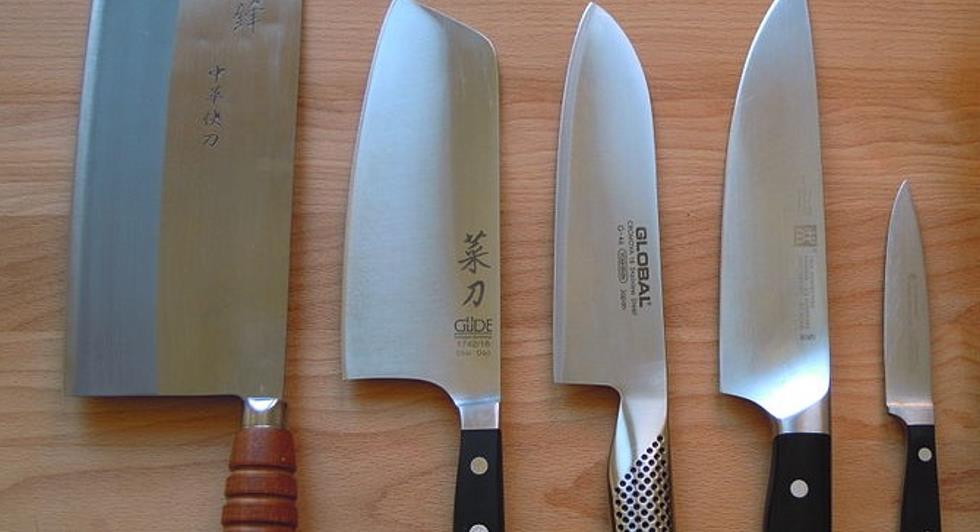
There are not many obvious physical weaknesses of Damascus steel because it has so many good properties for a knife. This is very impressive considering craftsmen forged top-quality Damascus steel blades over 1000 years ago.
However, if you are not enthusiastic about this historic metal, there are plenty of other options available to you nowadays. Perhaps you like the strong material properties but dislike the pattern. Maybe you are a fan of the pattern, but such a knife is out of your price range. Here are a few good alternatives to Damascus steel:
Stainless steels
As we mentioned, modern Damascus steel can be either stainless or high-carbon (unlike the original metal). You may be able to find standard stainless steel knives that are cheaper, though maybe not as nice to look at.
- A solid stainless steel choice is the “400 series”. Knives from this series have a high chromium content but are still quite strong. The 440 varieties consist of 440A, 440B, and 440C, each with increasingly high amounts of carbon for improved hardness.
- A more high-end option would be ATS-34. Aside from chromium, this alloy includes carbon and molybdenum to increase the hardness. A downside is that ATS-34 is not as rust-resistant as the 400 series.
High-carbon steels
Non-stainless steels have little or no chromium so are not as corrosion-resistant. Yet, they are known for being harder and therefore lower-maintenance. It does take more effort to sharpen them, though.
- The “10-series” is a great all-around choice for non-stainless steel. For example, 1084 or 1095 grades have 0.84 and 0.95% carbon, respectively. They are renowned for being affordable and hard, but not difficult to sharpen.
- W2 steel contains a small amount of vanadium to make the blade more scratch-resistant. It features a carbon content of over 1%. W2 steel also has some chromium, but not enough to make it stainless. It is useful not just in knives, but also in tools.
If you want more information on knife steel in general, be sure to read our article on this topic.
Whatever knife you buy, the steel must be first-class
If your knife’s steel is of poor quality, it does not matter if it has Damascus steel or not.
If you are not sure of where to start with your first kitchen knife, perhaps you might be interested in our range. We sell all-purpose, high-carbon steel kitchen knives that are strong and sharp ― much like Damascus blades.












